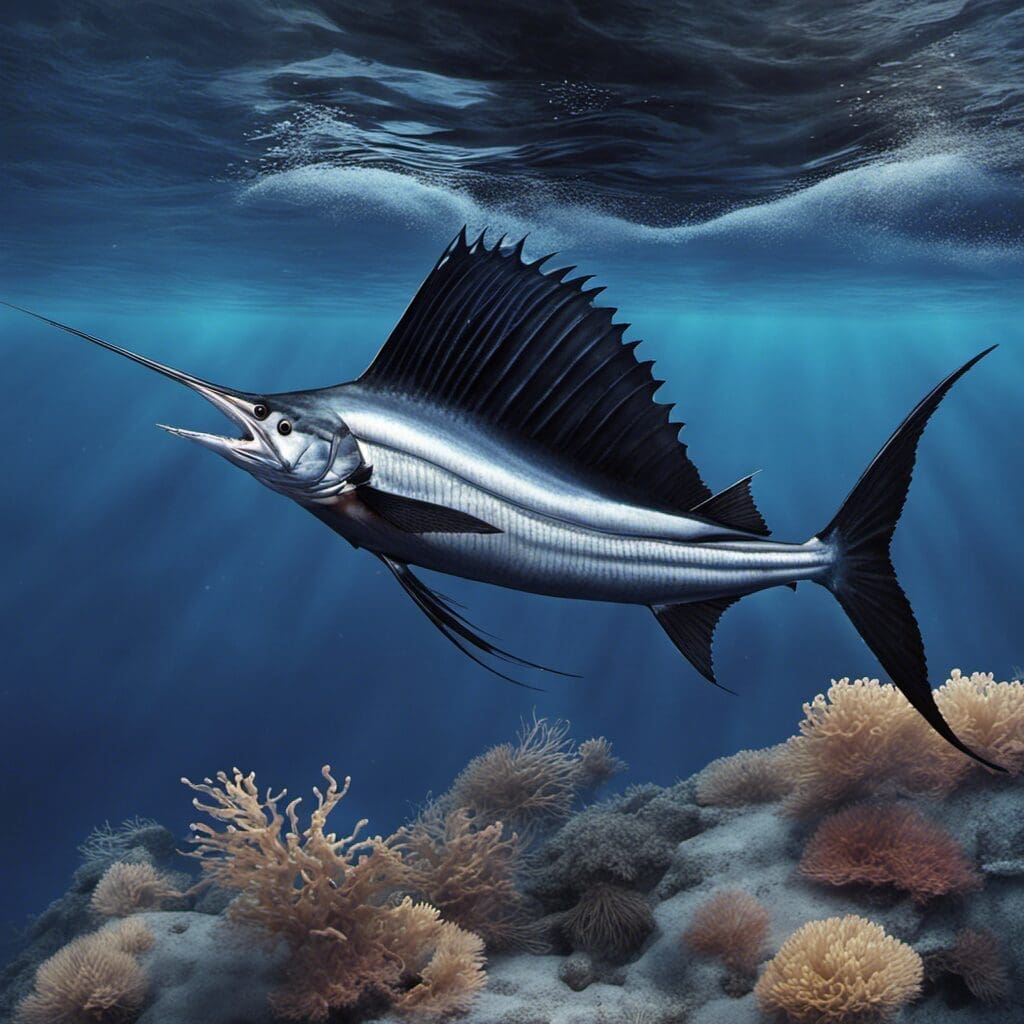Introduction
The Atlantic Sailfish, scientifically known as Istiophorus albicans, is a member of the billfish family Istiophoridae.
Conservation Status
The Atlantic Sailfish is currently listed as ”Least Concern” on the conservation status scale. Notwithstanding, efforts are put in place to maintain healthy populations through catch-and-release sport fishing and implementing size limits.
Statistics
| Statistic | Average | Range |
|---|---|---|
| Length | 8 feet (2.5 meters) | 5.7 – 10 feet (1.7 – 3.05 meters) |
| Weight | 120 lbs (54 kg) | 30 - 220 lbs (14 - 100 kg) |
| Lifespan | 13 years |
Distribution
The Atlantic Sailfish is found in the Atlantic Oceans and the Caribbean Sea. It migrates based on the water temperature, spending summers in colder, northern waters and the winters in the south, in warmer climates closer to the equator.
Habitats
The Atlantic Sailfish is a pelagic, oceanic species favoring warm waters. It usually swims between surface waters and depths of about 200 meters, depending on the temperature.
When and Where to See
Atlantic Sailfish can be spotted throughout the year; however, they are more commonly seen during the summer months when they migrate to cooler waters. They are mainly active during the day.
Best Fishing Locations
Some popular fishing locations for Atlantic Sailfish are:
- Florida, USA
- Bahamas
- Antigua
- Canary Islands, Spain
- Costa Rica
- Guatemala
- Anguilla
- Puerto Rico
- Madeira, Portugal
- North Carolina, USA
General Tips
Look for temperature edges or mismatches on the ocean surface, these are likely places to find Atlantic Sailfish.
How to Catch
Preferred lures include a variety of live baitfish and artificial lures. Techniques such as kite fishing and trolling are often used. The best time to fish for Atlantic Sailfish is during their peak migrations, in summer or early fall.
Identification Guide
The Atlantic Sailfish is characterized by its stretched, spindle-shaped body. It also has an elongated bill and a large dorsal fin or ‘sail’; which is often raised when the fish is excited or eating. Its color ranges from dark blue to gray with a silver-white underbelly.
Culinary
Though Atlantic Sailfish is not commonly eaten, it can be cooked if desired. It has a mild, somewhat sweet flavor and a lean, firm texture. Grill or oven-bake it for the best results.
Additional Information
Atlantic Sailfish use their sails to herd and disorient their prey before attacking. A mating ritual of the species involves females releasing their eggs in the water for males to fertilize.
Natural predators include sharks and marlins while human-induced threats include overfishing and bycatch.
References and Further Reading
For more in-depth research, the following references offer a wealth of information about Atlantic Sailfish:
- National Geographic www.nationalgeographic.com
- NOAA Fisheries www.fisheries.noaa.gov
- Florida Museum www.floridamuseum.ufl.edu

